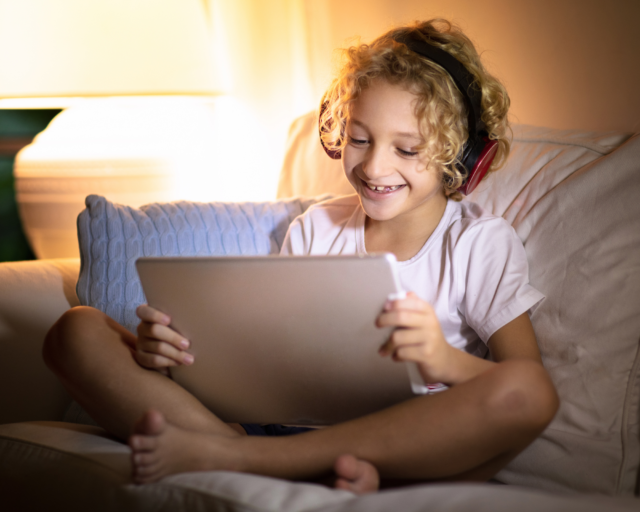Seppo As A Distance Learning Tool
Teachers
Seppo As A Distance Learning Tool At Poikkiilaakso Primary School
When Lalla Pohjanpalo and Katri Järvinen, two first grade teachers from Poikkilaakso Primary School, had to make up their mind about which platform to use for distance learning, they chose Seppo as their main tool.
The main reason for choosing Seppo was that the tool had to be easy to use so that young students could use it and it should support for example video and audio. Teachers also wanted to minimise the need for computers at home.
Most students have a smartphone at home and young students are often better in using mobile devices than computers. The teachers provided instructions to the homes in the beginning of distance learning and communicated clearly that the phone could and should be used to do assignments.
“The parents took it very well and even after the initial PIN-code and player name hassle, things have started to go really smooth. Already at the end of the first week we received feedback from parents that Seppo is a really nice online environment and the tasks we do are of high quality, things are going well,” Lalla and Katri say.
There are many different levels of students and the use of Seppo has made it possible for students to proceed at their own pace. At home, it has been possible for the parents to organise the day’s schedules smoothly. Teachers have also stayed constantly up-to-date, as students’ learning has been concretely monitored on one platform.
Teachers have built three games into Seppo: remote classroom, the morning session and a game for hearing comprehension, which is played once a week. The students were already familiar with the morning session concept from school, as the teachers have held morning sessions in the classroom, now it is held in Seppo.
“Every morning we ask one question that has been proposed by one of the students. We collected questions from everyone in the beginning of distance learning. This question assignment has turned out to be very exciting for the young students,” says Katri Järvinen.
The children have also enthusiastically sent answers to the questions. Then in the following morning’s assignment, teachers always display the previous day’s answers to the pupils and then ask a new question from the list.

Pupils in contact teaching also play the morning session in class and this has turned out to be an important moment of the day that connects pupils in distance and contact teaching. Lalla and Katri also think that the chat functionality is very important for maintaining the sense of community and supporting students’ social interaction.
“The magic of the morning session lies in the fact that it is a social moment for the students and therefore very important,” the two teachers say.
A familiar task from the classroom revolving around different strengths has also been moved into Seppo, the young students have managed to provide very insightful answers now, that they have had the opportunity to think about their answers at their own pace.
Katri and Lalla have also made use of the students’ own material, for example a picture gallery of crafts and handicrafts has been created, where pupils can share their own productions and share instructions. They therefore consider it very important that, regardless of the situation, students can see each other’s work and communicate with each other through Seppo.
The remote classroom game serves more as a platform for returning assignments and is designed so that the student can cope with it for some time on their own. That means, in principle, that the usual tasks have been transferred from the classroom to Seppo. In addition to Finnish, the remote classroom has assignments such as math, music and visual arts, and the assignments are returned through the game. Seppo has made it possible to build additional tasks in to the game and for the students to proceed at their own pace and, of course, to receive feedback on their tasks.
Lalla and Katri have been able to keep up the sense of community with video and audio assignments, which allow teachers to be present in distance learning also during independent study. Lalla and Katri have used a lot of video and audio tasks, which are easy for the young students to complete. And even though filming videos wasn’t very natural at first for the teachers, they have gotten used to it by now.
The fact that Katri and Lalla boldly set out to shoot the videos themselves has also encouraged the students a lot. In the two teachers’ opinion, Seppo has been an encouraging environment for the students and are really happy that even those students who are usually shy and reserved in the classroom have broken out from their shells and have been handing in very brave, imaginative and elaborate assignments.
Reviewing assignments has not become too burdensome for the two and they have made some of the exercises to be automatically evaluated. Lalla and Katri do not think that those exercises differ much from the wrong-right tasks that are usually done in the classroom.
There has been no need to add extra elements of gamification to the teaching content separately, as the small learners are inspired by the playful elements already found on the platform. At this time it has been more important to focus on supporting learning in clear and inspiring ways and to maintain the sense of community and support the little student’s social relationships. For this Seppo has been the perfect tool.
“We have even received such feedback from parents that it’s nice that boys have also been taken into account. As for once, doing school work doesn’t seem to be so tedious” say Lalla and Katri.